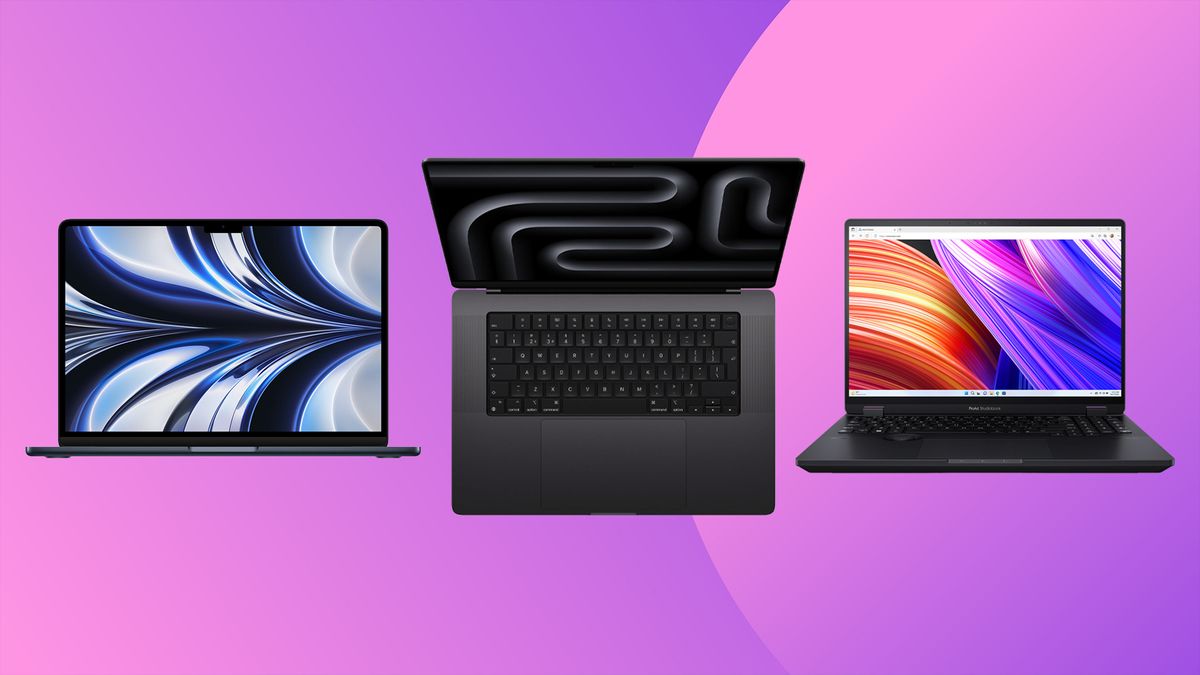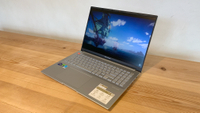The best laptops for video editing are in high demand in 2024, and not just for professional video editors. Creatives of all kinds, from photographers to graphic designers, are increasingly being asked to edit video, while many others are making a living crafting their own content for YouTube and Vimeo. In all these cases, you’ll want a laptop with a colour-accurate display, high brightness levels and a fast processor that can deal with the best video editing software.
Our experts have put numerous laptops to the test, to help us compile this guide to the best laptops for video editing. Below you’ll find our curated list of the top picks on the market today. And rest assured we don’t recommend a laptop on here unless we’ve used and tested it ourselves. (To learn more, see our guide to how we test laptops).
Once you’ve made your choice, check out our guide to the best monitors for video editing to complete your setup. Alternatively, if you don’t need a laptop specifically, also check out our selection of the best video editing computers.
Quick list
 Best overall
Best overall
Apple’s most powerful laptop can be boosted even more by the new M3 Pro or M3 Max chips. It looks gorgeous, too, and boasts a large 16.2-inch display that’s ideal for video editing. Plus, it offers 22 hours of battery life, a fantastic keyboard and trackpad, and tons of storage.
Read more below
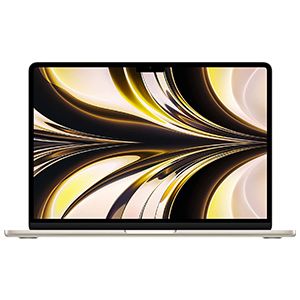 Best budget
Best budget
This lightweight laptop is more than capable of delivering a good video editing experience and has a roomy 16:10 display supporting the P3 wide colour gamut. Plus, with the M3 just out, this M2 model can be found regularly for under $1,100; an absolute steal for this calibre of tech.
Read more below
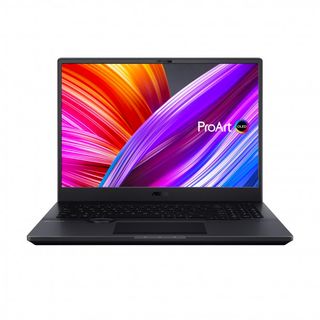 Best Windows
Best Windows
Combining some stellar specs and fantastic performance, this laptop stays cool, calm, and collected even under the duress of intensive tasks like video editing. The 16.0-inch 3.2K OLED screen is a big and beautiful canvas for editing, too, making it a great all-rounder to invest in.
Read more below
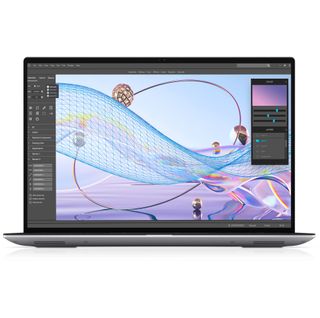 Best portable
Best portable
This simple and sweet laptop is light and portable, but don’t let that foo you. It can handle all manner of tasks without suffering in the performance department, and can go toe-to-toe with a far more expensive 14-inch MacBook Pro. It’s also got long-lasting battery life, too.
Read more below
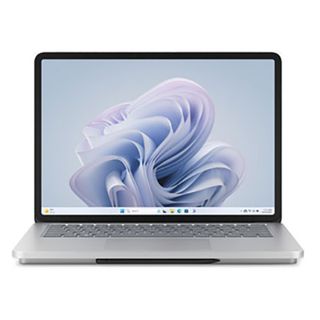 Best 2-in-1
Best 2-in-1
With its versatile form factor, this 2-in-1 laptop is great for multi-faceted creatives; especially those who might want to do some digital artwork, thanks to its easel mode. Its performance is very decent too, and the touchscreen is useful for video editors who want to work directly on the display.
Read more below
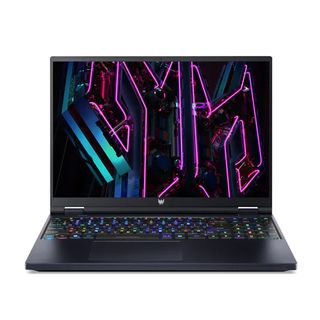 Best gaming
Best gaming
The Acer Predator Helios 16 is a great one-stop shop for video editors who like their gaming experience as full-on as their work, thanks to its NVIDIA 40-series graphics cards and powerful components. The 16in display offers up to 250Hz refresh rate, and there’s even a MicroSD slot built in.
Read more below
Best overall
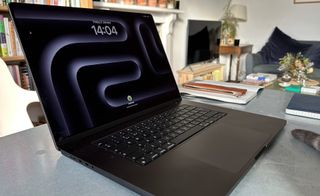

Specifications
Reasons to buy
Reasons to avoid
If Apple’s Macs are known for one thing, it’s their popularity among creatives, and the MacBook Pro 16-inch from 2023 beautifully displays this specifically with a video editing workflow in mind.
The key is the amount of power Apple manages to pack into this laptop, perfect for all the video editing processing-hungry apps you’d wish to use on it. And that’s before you even consider going for the M3 Pro or M3 Max. The straightforward M3 is capable of working through a DaVinci Resolve or Adobe After Effects workflow.
If you’re a professional who is dealing with a super demanding workload, the M3 Pro or M3 Max chips, are exceptional at dealing with demanding jobs, with the latter chip being the most powerful chip available in Apple’s portable Macs. Apple says the M3 Max is 80% faster than the M1 Max for multithreaded workloads. What we can guarantee is that in our testing the regular M3 was more than fast enough for a decent amount of pro-level video editing.
Another reason this is perfect for video editors is the MacBook Pro’s gorgeous display. It’s large and spacious at 16.2 inches across and comes loaded with Apple’s mini-LED panel that provides super-accurate colours and deep blacks. When testing it, we also appreciated the brightness that the display achieves, which is essential for accurate editing. Add in 22 hours of battery life, a fantastic keyboard and trackpad, and tons of memory and storage, and you’ve got the best laptop for video editing, hands down.
Read our full review of the MacBook Pro 16-inch (M3, 2023) to find out more.
Best budget laptop
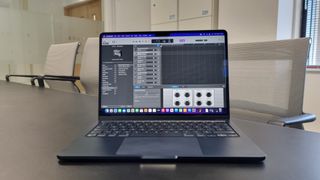
Specifications
Reasons to buy
Reasons to avoid
Things changed drastically with in 2020 when Apple started making its own processor, which it called the M1 chip. Nowadays, with its successor the M2, even the MacBook Air is suitable for lightweight to moderate video-editing tasks. And because it’s cheaper than the MacBook Pro, that makes it a great choice for novices and enthusiasts who want a capable laptop.
And by the way, that M2 chip doesn’t just mean better performance in heavyweight video editing software such as Premiere Pro and Final Cut Pro. It also means excellent batter life. For example, in our battery benchmark test, where we ran a looped 1080p video until the battery dies, the MacBook Air (M2, 2022 lasted for just over 16 hours – a seriously impressive feat.
Starting at $1,100 from Apple – but available through other retailers for well under a grand – you’re getting a lot for your money here. Here we’ve picked the 13-inch MacBook Air as our top value choice but also be aware that there’s a 15-inch MacBook Air (M2) if you’re looking for extra screen space for your editing.
The latest version of MacBook Air doesn’t come with a fan, the idea being that the chip is so efficient it only needs passive cooling. In our tests, we found that it does start to lag when doing the absolute heaviest DaVinci editing tasks, but that said, it can chew through most tasks just fine.
Read our Apple MacBook Air (M2, 2022) review for more info.
Best Windows laptop
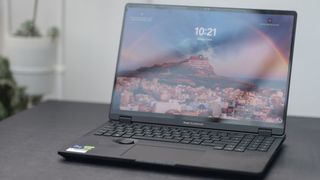

Specifications
Reasons to buy
Reasons to avoid
Is Apple not your thing? No problem, because the ASUS ProArt Studiobook OLED (H7604) shows you don’t need a Mac to get a superb video-editing laptop. If you prefer the Windows OP, we believe this is the best choice around. Why are we so fond of it? Well, it manages to combine an excellent set of specifications with the ability to run cool and quiet, meaning it can output strong performance without breaking overheating. For intensive tasks like video editing, that’s a real boon.
We got our hands on the model packed with a 13th-generation Intel Core i9 processor, a Nvidia RTX 4070 graphics card, and 64GB of memory. In our testing, the bottom line is that you won’t miss out on performance if you opt for Windows over macOS. Also, we loved the gorgeous, bright and sharp OLED screen when conducting our video-editing work. This laptop is a class act.
Plus it’s not just about raw specs, it’s about functionality too. Handily the keyboard comes with a dial (at the bottom left of the space bar, above the top of the trackpad). It’s customisable through ASUS’ ProArt Creator Hub, so you could use it, for example, to scrub through a timeline, streamlining the video editing process considerably.
Read our ASUS ProArt Studiobook OLED (H7604) review for more information.
Best portable laptop
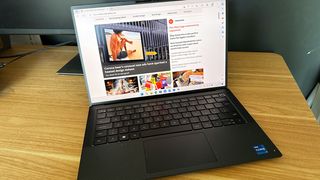

Specifications
Reasons to buy
Reasons to avoid
Not every great video-editing laptop is a chunky, heavy beast with enormous fans and RGB lights sparkling everywhere you look. Case in point: The Dell Precision 5470. This understated computer might not catch the eye, but you’d be acting way too hastily if you wrote it off because of that.
Our testing found it held up to all manner of tasks absolutely admirably, producing results comparable to a 14-inch MacBook Pro with an M2 Pro chip – something that costs more than Dell’s offering. That’s a good indication of the kind of value you get from this laptop. Despite its understated style, it’s a real wolf in sheep’s clothing, giving you the exceptional performance and long-lasting battery life that is so important to video-editing work.
Our reviewer loved the screen too, finding that colours popped and image detail was pin-sharp. The keyboard was another highlight, and a fully charged battery delivered a solid 12 hours of mixed use.
You can read more in our review of the Dell Precision 5470 to learn more about why it’s a worthy purchase. It’s also been updated very recently by the Dell Precision 5480, which we’ll be testing very soon.
Best 2-in-1
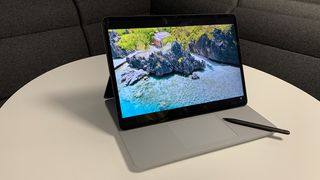
Specifications
Reasons to buy
Reasons to avoid
A 2-in-1 laptop allows you to switch between video editing on a laptop to tweaking your timelines as if you were on a tablet. The Microsoft Surface Laptop Studio 2 excels at this flexible use case, and you’ll love how seamless it is to shift from one form factor to another.
It’s a respectable performer when it comes to video editing, and while there are more powerful options out there, few have the flexibility and portability you get with the Surface Laptop Studio. The display is an impressive 14.4-inch screen boasting a beautiful 2400x1600px and a refresh rate of 120Hz.
If you also dabble in a little digital artwork, you’ll appreciate its ‘easel’ mode, which sits the screen at an ideal angle for using a stylus, if you prefer working directly on your screen when doing your video-editing work. What’s more, its strong integration with Microsoft’s Slim Pen 2 makes on-screen edits a breeze.
In other words, if you work on the go, want to mix video editing with digital art, or just want something that doubles up as a fantastic tablet, this 2-in-1 is a great choice. We’d go for the Nvidia RTX 4060 graphics configuration.
Read our full Microsoft Surface Laptop Studio 2 review to find out more.
Best gaming laptop
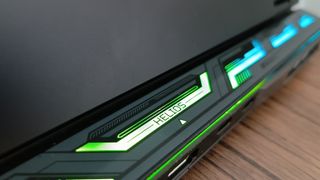
Specifications
Reasons to buy
Reasons to avoid
The Acer Predator Helios 16 is as prototypical a gaming laptop as you’ll ever find in the wild, but that may also be why it makes for a fantastic video-editing laptop as well. The 16-inch 250Hz display is perfect for content creation and a winner for those who tend to multitask.
It’s packed with everything needed for effortless high-performance video editing, such as the 40-series graphics cards from NVIDIA, up to 32GB of RAM and a 16-inch screen that offers up to 250Hz refresh rate and ample brightness. We loved using it for all manner of work during our testing, as well as play. The WQXGA screen is lovely and bright too, and it offers 2560×1600 resolution, a refresh rate of up to 250Hz and a 100% DCI-P3 colour gamut.
Yes, battery life isn’t the best, and it’s decked in RGB lighting which won’t suit everyone. Plus at 2.9kg it’s pretty heavy for a laptop. But if you can look past these things, you won’t find a much better laptop for video editing. Better yet, you can also run every game in existence once your day job duties are done.
Read our full Acer Predator Helios 16 review for the full lowdown.
Best dual-screen
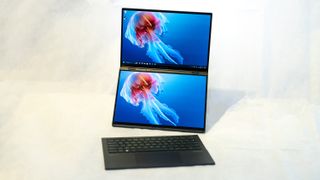
Specifications
Reasons to buy
Reasons to avoid
Make no mistake about it, the Asus Zenbook Duo OLED (2024) is one striking laptop. It packs in not one but two displays, with a second full-size screen cleverly located underneath the detachable keyboard.
What can you do with this second display? As it turns out, it’s perfect for video editing. That’s because you can extend your workspace onto that screen – think a set of controls and tools, or a video timeline. Instead of having them crowd up your main screen, they’re moved below where they get their own dedicated space. It’s a great tweak to a video editor’s workspace.
Of course, none of that would mean much if this laptop wasn’t very capable. But it’s equipped with a powerful 14th-gen processor that will chew through video work with ease, even though it’s “only” equipped with Intel Arc Graphics.
That means you get a shedload of performance encased in an innovative, intuitive workspace that feels custom-built for editors and renderers. Battery life is compromised a little with the two-screen setup, but it’s still much improved from the previous generation, thanks to the AI-boosted NPU integrated into the new Intel Core Ultra processors.
Read our complete Asus Zenbook Duo OLED review for more details.
Best workstation
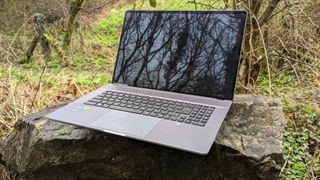
Specifications
Reasons to buy
Reasons to avoid
Another gaming laptop that doubles as a great laptop for video editing, the MSI Creator Z17 brings you MacBook Pro/gaming laptop power, without being a MacBook Pro with Apple’s OS or decked out in garish RGB lighting.
Coming in at over $3,000 on release, it’s not the cheapest – but has actually reduced slightly in price, earning its choice here as a great balance of desktop-like power and (some) portability. It’s heavy, and the battery life is pretty poor, so keep this in mind as you’ll need to be on the lookout for a power outlet if you venture into the wild with it.
This laptop offers 8K video output capabilities and comes equipped with powerful, well-cooled internals from one of the best laptop makers for creatives out there. We also love the large, bright touchscreen, which has a 16:10 aspect ratio, uses IPS technology, and can display 100% of the DCI-P3 colour gamut. It also doubles as an input mechanism with the MSI Pen, which offers 4,096 levels of pressure sensitivity.
Overall, this a great choice for video editors who need a reliable workstation, although it’s not the most portable or office-friendly device.
Read our complete MSI Creator Z17 review for more details.
Also tested
The options above are our top choices for video editing laptops, but there are other laptops out there that are worthy of your attention.
We plan to be constantly adding to and updating the list below, which features other laptops we’ve tested and picks that you should feel confident in using in your video-editing work. So if none of the above quite do it for you, all hope isn’t lost: you might just find your future workmate below.
Framework – Great modular laptop
Framework is a unique laptop in that you can hot-swap components in and out depending on your requirements, which makes it uniquely useful to video editors who need to multitask. Add to it the compact, easy-to-carry design, and you’ve got yourself a very useful video-editing workmate.
Read our 4.5-star review.
ASUS Vivobook Pro 16 – Budget option for Windows users
The ASUS Vivobook Pro 16 is a great multi-purpose laptop for creatives, including students in design-related industries, with the OLED screen complementing any video work perfectly. It has plenty of processing power, and the dedicated GPU keeps all visual tasks running smoothly. It’s not got the best battery life, but that’s a small price to pay.
Read our 4.5-star review.
MSI Raider GE78 HX – Powerful gaming laptop
If you play a lot of games as well as working as a video editor, the MSI Raider GE78 HX is another good choice. With a an Intel Core i9 processor and a NVIDIA GeForce RTX 4090 Laptop GPU, it delivers blistering performance for speedy editing and buttery-smooth gaming. The cooling fan is noisy, though, so you may need to wear headphones.
Read our 4-star review.
FAQs
Do I need a dedicated graphics card for video editing?
For regular video editing, a dedicated graphics card isn’t strictly necessary, but if you’re looking to do more professional video editing and rendering complex graphical effects, then a laptop with a dedicated GPU could be a good investment. “Investment” is a key word here, as laptops with dedicated graphics cards are often far more expensive, so you’ll want to make sure that you actually need that kind of power before you put down any money.
Some laptops containing Nvidia GeForce RTX graphics cards can run Nvidia Studio drivers, which are specialised drivers that use AI to boost performance across a wide range of different creative applications. These GPUs are typically on the pricey side, so any laptops with the latest Nvidia hardware is likely to be more expensive than something with an older GTX series card or those running with integrated graphics (ie, graphics processors that are built into the CPU).
When it comes to MacBooks, they no longer come with a dedicated GPU. Instead, the company’s M-series chips have powerful integrated GPUs that work brilliantly and are more than capable of running all the popular video-editing applications.
Are laptops for video editing expensive?
Because of their combination of powerful hardware and slimline designs, many of the best laptops for video editing can also be pretty expensive. However, you can still find a great video-editing laptop without breaking the bank. You might be confined to editing lower-resolution footage or may have to put up with longer rendering times, but for many people that will be absolutely fine.
You may notice from the list above that quite a few companies that specialise in gaming laptops, like Alienware and Razer, also make laptops designed for creative professionals. These laptops use the same powerful hardware you’d find in a high-end gaming device, but without some of the game-centric features (and garish designs). Most importantly of all, they include powerful graphics cards that can drastically cut the time it takes to edit and render videos.
With lashings of CPU and graphics power, they’ll chew through the best digital art software and encode videos faster than any standard laptop, and you’ll find them included in this list as well. Whether you’re a Mac fan or a Windows wizard, we’ve got you covered. If you’re looking for a laptop for other uses as well, see our roundups of the best laptops for programming and the best laptops for music production.
Should I buy a MacBook or Windows laptop for video editing?
When looking to the best laptop for video editing, one of the biggest choices you’ll have to make is whether to get a MacBook or a laptop that runs Windows.
Part of this is down to individual taste. If you’re used to using the Windows operating system, you may find that macOS (which is what MacBooks run on) is a bit confusing with how things are done – and vice-versa.
However, both Windows and macOS offer broadly the same video-editing software packages. However, the popular Final Cut Pro app is only available on macOS.
MacBooks are very popular among video editors thanks to their powerful performance and stylish designs, but in recent years Windows laptops, such as the Dell XPS line, can easily match Apple’s laptops in both style and substance.
Windows laptops also benefit from being made by a large range of manufacturers, so if you don’t like the design of a certain brand’s laptop, you could always go for another. With MacBooks, only Apple makes them, so if you want a MacBook but don’t like Apple’s style, then you’re out of luck.
You can choose Windows for video editing, but many video editors use Apple computers. Some Apple laptops (such as the 13-inch and 15-inch MacBook Air) offer a fanless design, and all come with native support for Apple’s Final Cut Pro video-editing app. All of Apple’s latest laptops come with the company’s own M-series chips, and the flagship designs (like the M2 Max) offer exceptional video-editing performance, even at ultra-high resolutions like 8K.
How we test video editing laptops
Creative Bloq’s team of hardware experts bring with them many years of experience using, testing and benchmarking laptops with a focus on running creative applications. All the laptops in this guide have been tested either by using software used by video editors or benchmarked to ensure the CPU and GPU are capable of pro-level video-editing jobs. We run different benchmark tests on each device depending on its intended use by its maker, but the laptops we’ve included in this guide have all been run through the following:
• Cinebench R23/2024 – this assesses the performance of a computer’s CPU and GPU using real-world 3D rendering tasks
• Geekbench 5/6 – this tests the CPU’s processing power, both by using a single core for a single task at a time as well as all the CPU’s core to see its ability to multitask
• Handbrake – we use this free and open-source transcoder for digital video files to render a short 4K animated film, using the same file for all our tests
• 3DMark – this assesses a computer’s ability to run graphic rendering tasks, which is necessary for video editors
• PCMark 10 – this test assesses a computer’s ability to run all everyday tasks from web browsing to digital content creation, testing app launch speeds, video playback and loading, and even battery life
But perhaps more importantly than technical benchmarking, we evaluate machines in real-world situations, pushing them to the limit with multiple applications running to see how they perform in real project-like conditions. Power, speed, flexibility, and what a computer looks and feels like to use are all criteria in our reviewing process.
We do much more than simply unpack a test unit, run some benchmarks and then pack it up again; we have lived and worked with all of the above computers, running them in real-life scenarios and completed projects relevant to the subject of this guide, otherwise we wouldn’t recommend these models to you.
For more details, see our article on How we test.
How to choose the best video editing laptop
What makes a great laptop for video editing? First, you need power. Video editing, especially when working with ultra-high-resolution footage, can be demanding, so you’ll want a laptop with plenty of RAM (at least 8GB, although 16GB is advisable). You’ll also want a modern processor, either from Intel or AMD, or if you’re after a MacBook, Apple’s own M-series chips have proved to be awesome hardware for video editing.
Video editors will also want a laptop with plenty of fast SSD storage because video files can be very large. Even if you’re using external storage solutions, you’ll want something that can open up your files quickly, or allow you to move them between the laptop and a backup drive, for example.
In most cases, you’ll also want a dedicated graphics card, especially if you’re using professional software, creating visual effects, or using AI-boosted applications. Nvidia and AMD are great options here. That said, Apple has developed its own silicon that has integrated graphics that are very powerful and efficient, particularly in the M Pro and Max chips, which have been optimised for greater efficiency in video work.
The best video-editing laptops will also come with high-resolution screens so you can comfortably work on them, and they will display your footage with accurate colours. Some of the laptops on this list will actually come with professionally calibrated screens to ensure your footage looks its very best.
High-quality built-in speakers are also a great bonus, as the soundtrack to your videos is just as important as the footage itself. Having great speakers lets you listen and edit your video’s soundtrack without needing to invest in external speakers (although the chances are you will want to).
